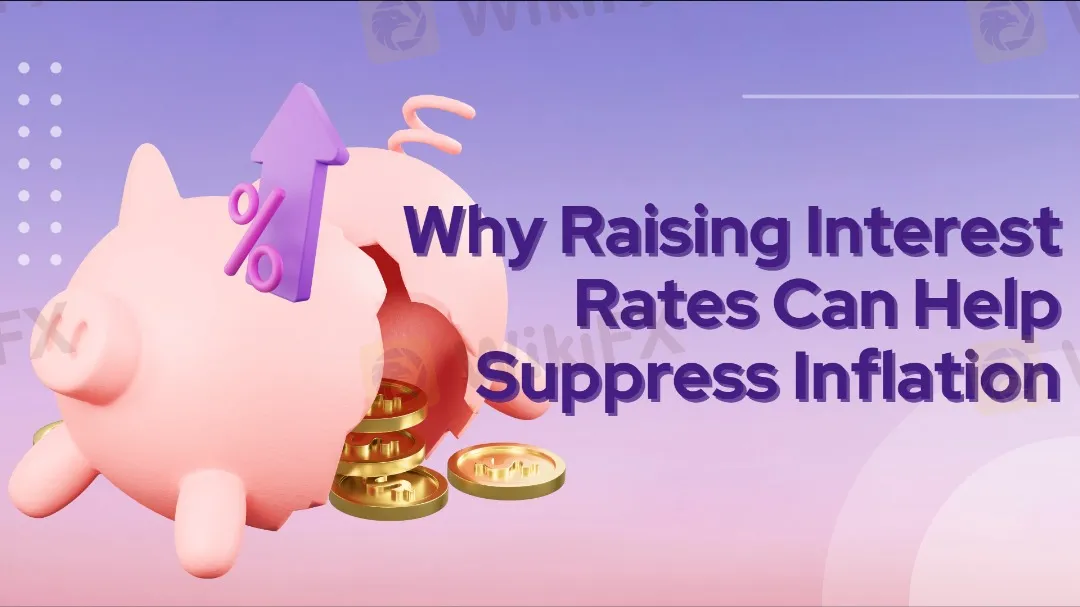简体中文
繁體中文
English
Pусский
日本語
ภาษาไทย
Tiếng Việt
Bahasa Indonesia
Español
हिन्दी
Filippiiniläinen
Français
Deutsch
Português
Türkçe
한국어
العربية
Why Raising Interest Rates Can Help Suppress Inflation?
Abstract:Over the past significant period, the United States has consistently implemented interest rate hikes with the aim of curbing inflation. Throughout this process, although the inflation data in the United States did not decrease rapidly, there was, at the very least, a containment of the upward trend. So, why does raising interest rates help control inflation?

Over the past considerable period, the United States has been consistently raising interest rates with the aim of curbing inflation. Throughout this process, it can be observed that, although inflation data in the United States did not decrease rapidly, at least the upward momentum was contained.
So, why can raising interest rates curb inflation? Let's briefly discuss this today:
How does inflation occur?
The fundamental reason why inflation occurs is that there is too much money supply, which is what is called “flooding the market with money”! Money represents purchasing power. When the money supply increases, the purchasing power of the whole society rises, consumption and investment increase, and price hikes become inevitable. At the same time as consumption demand increases, it will also stimulate producers of goods to increase investment in order to expand production capacity, thus leading to an increase in demand for raw materials and causing prices of raw materials to rise. This in turn drives up production costs of goods.
Ultimately, this forms inflation!

One of the purposes of interest rate hikes: Curbing consumption and investment!
After interest rate hikes, consumption can be restrained in two aspects:
Having money in the bank to earn higher interest will curb the desire for consumption.
Higher interest costs on borrowing for investing or consumption.
As long as consumption and investment are curbed, inflation can then also come down.
Second purpose of interest rate hikes: Appreciating domestic currency
After interest rate hikes, it pushes the appreciation of domestic currency against foreign currencies, enhancing the purchasing power of domestic currency on imported goods.
With the lowered costs of goods imported from foreign countries, the sales prices of these goods domestically can also come down, thereby driving down overall inflation levels.
Therefore, interest rate hikes whether externally or internally, are helpful in curbing inflation.
Interest rate hikes can curb consumption and investment, thereby resisting inflation;
Interest rate hikes can increase purchasing power of imported goods, thereby resisting inflation.

Disclaimer:
The views in this article only represent the author's personal views, and do not constitute investment advice on this platform. This platform does not guarantee the accuracy, completeness and timeliness of the information in the article, and will not be liable for any loss caused by the use of or reliance on the information in the article.
Read more

Webull Launches SMSF Investment Platform with Zero Fees
Webull introduces commission-free SMSF trading, offering over 3,500 US and Australian ETFs, with no brokerage fees and enhanced portfolio tools.

How Will the Market React at a Crucial Turning Point?
Safe-haven assets like gold and U.S. Treasuries are surging, while equities face mounting pressure. As this pivotal moment approaches, how will the market react?

Gold Prices Climb Again – Have Investors Seized the Opportunity?
Gold prices have hit record highs for three consecutive days, with a remarkable 19% gain in the first quarter, marking the strongest quarterly performance since 1986. As market risk aversion rises, demand for gold has surged significantly.

The Ultimate Guide to Automated Forex Trading in 2025
Modern markets are revolutionized by automated trading systems, which now execute 70-85% of all transactions. These advanced automated trading software solutions, commonly called trading robots or Expert Advisors (EAs), leverage algorithmic precision for automatic trading across forex, stocks, and commodities 24/7. By removing emotional interference and executing trades in microseconds, auto forex trading platforms create fair opportunities for all market participants. For those new to automated trading for beginners, these systems provide disciplined, backtested strategies while significantly reducing manual effort.
WikiFX Broker
Latest News
Exposing the Top 5 Scam Brokers of March 2025: A Closer Look by WikiFX
Gold Prices Climb Again – Have Investors Seized the Opportunity?
Webull Launches SMSF Investment Platform with Zero Fees
Australian Regulator Warns of Money Laundering and Fraud Risks in Crypto ATMs
FCA Warns Against 10 Unlicensed or Clone Firms
CySEC Warns Against 14 Unlicensed Investment Websites
Top Currency Pairs to Watch for Profit This Week - March 31, 2025
Will natural disasters have an impact on the forex market?
Philippines Deports 29 Indonesians Linked to Online Scam Syndicate in Manila
AI-Powered Strategies to Improve Profits in Forex Trading
Currency Calculator







